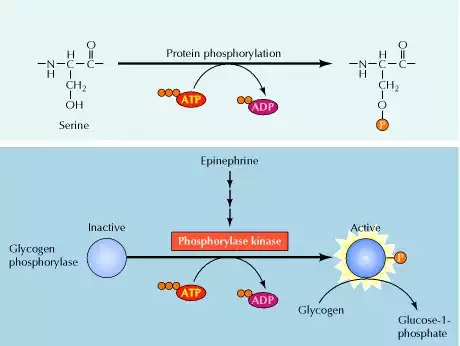Healthy Food to promote Aging with Nutrition
Essential nutrients are important components in food. Our body cannot produce them on its own, so we need to consume them to grow, function properly, and stay healthy. By consuming healthy food that promotes aging with proper nutrition, we can avoid chronic diseases and maintain our health.
The essential nutrient is a term used by nutritionists to describe the vitamins and minerals needed for good health.
It is of utmost importance to change our habits. Eating unhealthy food can lead to poor health as you get older, even if it didn’t seem to affect you when you were younger.
Unhealthy eating habits are the main cause of aging and age-related diseases. However, these conditions are noncommunicable diseases because they are related to our behavior.
The other five groups are micronutrients or trace elements which help maintain normal body functions such as digestion, growth, reproduction, and immunity.
Micronutrients
Macronutrient Nutrition Facts Calorie Foods That Are High In Calcium
A calorie is an amount of heat required to raise 1 gram of water from room temperature to 100 degrees Celsius. A kilocalorie equals 1000 calories.
The average person burns about 3,500 calories a day and needs 2,000-3,000 calories per day for basic survival. The body uses the remaining energy for growth, repair, and other functions that are not essential for life.
Calories in food come mainly from carbohydrates, protein, fat, vitamins, minerals, fiber, and alcohol. Calories can also be lost through exercise or by sweating. Most people burn more than they consume each day.
Healthy Food to promote Aging with Nutrition via Carbohydrates
Are compounds made up of carbon, hydrogen, and oxygen, and they are important for healthy aging.
Carbohydrates include sugars, starches and cellulose.
Starch-based foods like bread, cereals, pasta, rice, potatoes, corn, beans, peas, oats, barley, and wheat are the most common carbs in our diet. These contain intricate polymers known as amylpolymers.
It is a very complex molecule, and it has many properties that are useful in the food industry. Amylose can be used to make starch-based products like breads or pasta. The starch molecules have been modified, so they will not absorb water as easily. This makes them more stable and easier to handle during processing.
They also tend to form stronger bonds with other ingredients such as proteins, fats, and oils. These properties help them to be more effective in the body than most of their counterparts that are not bonded together. They can even work better when they’re combined with each other!
The following is a list of some common types of emulsifiers:
Gums – Gums include natural gums like agar-agar, carrageenan or xanthane gum.
Hydrocolloids Hydrocolloid are polymers that can be used to form colloidal solutions and stabilize foams. They have the ability to absorb water from their environment without dissolving in it. Common hydrocolloids include alginate, pectin, guar gum, gelatin, starch etc.
Lecithins are phospholipids found naturally in egg yolk.
Good Healthy Weight Parameters
The amount of body fat that you have depends on your height and age. The more muscle mass you have, the less likely it is to be overweight.
If you are underweight, then this may indicate an eating disorder such as bulimia nervosa or anorexia nervosa.
Good Fats in Food
Fats are a type of lipid, or fat. They’re the main source of energy for your body, and they provide essential fatty acids that help keep you healthy.
The two types of fats in food are saturated and unsaturated. Saturated fats are found in butter, lard, coconut oil, palm oil, tallow, beef suet, cheese, milk chocolate, cream, eggs, full-fat dairy products like yogurt and ice cream, and certain processed foods.
Fats also give us energy and help with normal growth and development, immune function, vitamin absorption, hormone production, and more.
The best fats for your body are the ones that come from whole foods like nuts, seeds, avocados, olive oil, coconut oil, butter, lard, tallow, ghee or duck fat. These fats are good in the fight against cardiovascular disease to help lengthen your lifeline and avert age-related chronic disease.
You can also get some of these in supplement form, but they’re not as effective, and you need to take them on a regular basis.
After 12 weeks, there were no significant differences between the control group and the experimental group in terms of fat mass, lean mass, visceral fat mass, diastolic blood pressure, LDL cholesterol, HDL cholesterol, triglycerides, fasting glucose, fasting insulin, HOMA-IR, and homocysteine levels.
Fat mass, lean mass, visceral fat mass, diastolic blood pressure, LDL cholesterol, HDL cholesterol, triglycerides, fasting glucose, fasting insulin, HOMA-IR, and homocysteine were not significantly different from controls after 12 weeks (no group×time interaction).
How to Utilize Fats for your Bodies benefit
Fats are crucial for a healthy diet. They can be used in various ways to support weight loss and prevent heart disease and related conditions.
The key factor is to know how much fat should go into each meal or snack so that it will not cause any problems for your body. Harmful fats can be alleviated by increasing physical activity and eliminating the probability of age-related diseases.
Utilize the Good Proteins in Your Food
Can be classified into two major groups based on their function: enzymes and structural proteins.
Enzymes are the catalysts of biochemical reactions, while structural proteins provide a framework for other cellular components such as membranes or organelles.
The majority of eukaryotic cells contain both types of protein; however, in prokaryotes only one type is found. Proteins that perform similar functions tend to have related structures.
Proteins are essential components of our cells. They help build and repair tissues, as well as maintain muscle and lean body mass.
Protein is a macronutrient that plays an important role in our body. It helps to build muscles, bones and other tissues. Protein also aids digestion by helping with protein synthesis.
The amount of protein you need depends on your age and gender. The average adult needs about 0.8 grams per kilogram of body weight each day.
However, it can be increased up to 1 g/kg if you have muscle building or athletic goals. This means that your diet should contain at least 50% of total calories from protein.
For example: a person weighing 70 kilograms would require 35 grams of protein daily. This is divided into three meals and two snacks.
Food source for proteins
The food sources of protein are plants, animals and microorganisms. The most common plant-based foods that contain significant amounts of protein include grains, legumes and nuts.
Animal products such as meat, fish, poultry, eggs and dairy also provide a good amount of dietary protein.
Microbial organisms can be used to produce certain types of protein in the form of fermented milk or cheese.
Good Minerals for Health in your food
Good minerals are essential for maintaining optimal health and well-being. While they may be required in small quantities, their role in various bodily functions is indispensable.
These minerals play a crucial role in muscle contraction, enabling our bodies to move and perform physical activities effectively.
They also help maintain fluid balance within the body, ensuring that our cells receive adequate hydration. Another vital function of these minerals is their contribution to food digestion.
They aid in breaking down food particles so that nutrients can be efficiently absorbed by the body. Moreover, they are actively involved in the process of bone building, which contributes to maintaining healthy bones and preventing conditions such as osteoporosis. Regulating blood pressure is yet another critical role played by these minerals.
They help our cardiovascular system work properly, which keeps our blood pressure healthy and lowers the risk of hypertension and related problems.
Additionally, incorporating foods rich in these minerals into our diet can contribute to reducing the likelihood of age-related diseases.
These ailments often result from deficiencies or imbalances in mineral intake, making it important to include them as part of a balanced diet.
Some examples of healthy minerals found in food include calcium, magnesium, potassium, phosphorus, and sodium. You can get these nutrients from different sources. For example, calcium can be found in dairy products, magnesium in nuts and seeds, potassium in fruits and vegetables, phosphorus in lean meats, and sodium in processed foods.
Incorporating a diverse range of mineral-rich foods into your daily meals will ensure you receive an adequate supply of these essential nutrients.
Consulting a healthcare professional or nutritionist is recommended to determine your specific dietary needs. Factors such as age, medical conditions, and lifestyle choices should be taken into account.
To support your overall health and reduce the risk of nutrient deficiencies and related health problems, it’s important to prioritize consuming good minerals in your diet.
Remember that all nutrients work together synergistically; therefore, maintaining a well-rounded and balanced diet is crucial for optimal health.
Mighty Vitamins Transfom Your Diet
These are the most important nutrients for your body to function properly. Taking a daily dose of vitamins can help prevent age-related conditions, according to nutrition experts from Oxford University Press.
They enhance blood cells and help with energy production, immune system health, healthy skin, hair, nails, teeth, eyes, muscles, bones, joints, organs, and brain development.
Nutrition experts always emphasize the importance of healthy eating at all ages. However, the amount of nutrients we need and how our bodies process them can change over time and depend on our personal health.
As you age, your dietary patterns change.
You may need more vitamin D and calcium for bone health, more B12 for brain and blood health, and more fiber for a healthy digestive system.
Quench Your Thirst for Good Health with the Power of Water
It is an indispensable component comprising around 60% of the human body, playing a pivotal role in promoting overall well-being through healthy nutrition.
By keeping your cells adequately hydrated, water enables them to carry out their functions effectively. Additionally, it aids in maintaining optimal digestive health by flushing out toxins from your system and ensuring smooth operation of your digestive tract.
Water is important for our bodies. It helps transport important substances to our cells and regulates our body temperature. It also helps cushion and lubricate our bodily functions, and helps get rid of waste.
It is worth mentioning that some individuals may require higher water consumption as their sense of thirst diminishes over time.
Bioactive compound nutrition
Are not considered essential because they haven’t been shown to lead to deficiencies if they’re missing in the diet.

However, they may positively impact health by reducing the chance of getting cardiovascular disease.
Bioactives are a big part of nutrition research and scientists are trying to better understand and unlock their potential health benefits.
Bioactives that you have likely heard of are carotenoids.
Colorful plant pigments in red, yellow, and orange fruits and vegetables are powerful antioxidants. They can potentially prevent certain cancers and heart diseases and reduce the risk of eye diseases. These pigments also boost the immune system and have other benefits.
Resveratrol
Is another bioactive found in the skin of grapes, blueberries, raspberries, and mulberries that may reduce the risk of heart disease.
Flavanols are a part of the flavanoid family that are found in tea, red wine, and cocoa and may positively influence our cardiovascular health.
Phytosterols
Are steroid compounds in plants that may lower cholesterol and improve cardiovascular health.
Phytoestrogens, found in many plants including soy and other legumes, are also being studied for their potential in reducing the risk of breast cancer.
Use common sense
Your medical conditions, or the medications you take, may also require you to adjust your diet.
It’s important to talk with your health care team when deciding the best nutrition plan for you.
People can get the necessary nutrients from a balanced diet that includes nutrient-rich fruits and vegetables, lean proteins, and whole grains recommended in the US Dietary Guidelines.
Some people may choose to take dietary supplements if they have deficiencies, certain diseases, specific conditions, or changing nutritional needs at different stages of life.
Supplements include vitamins, minerals, herbals and botanicals, amino acids, enzymes, and bioactives.
You may be one of the many adults that takes a dietary supplement of some kind, but do you know enough about what is safe and what you can trust?
Due to the increased vulnerability of this life stage, a greater focus on dietary intake may be warranted during routine care. The Joint Commission, a nonprofit organization in the United States, requires nutrition screening within 24 hours of hospital admission in acute care settings.
Screening identifies risk factors like unintentional weight loss, low BMI, compromised dietary intake, swallowing difficulties, use of assisted nutrition, and pressure ulcers. The timing of food intake was also recorded.
Time-restricted feeding does not require monitoring calorie intake. This might be the reason why the caloric deficit achieved with time restricted feeding is lower.
The group that followed time-restricted feeding experienced a significant decrease in systolic blood pressure (-7 ± 2 mm Hg) compared to the control group. This difference was observed throughout the study (group×time interaction, P = 0.02).
We also demonstrate that this fasting regimen produces significant reductions in systolic blood pressure relative to controls.
Systolic blood pressure was the only parameter that improved over the course of the study, relative to controls.
This diet may also offer some clinical benefit by reducing systolic blood pressure.
Too often what’s popular one day, seems to make headlines the next for being unsafe.
The FDA regulates drugs, medical devices, and dietary supplements to keep people safe from chronic diseases.
But supplements are not regulated as strictly as drugs, because they have been considered to be more like food than drugs.
Companies can produce and sell supplements without approval or evidence to support their claims.
There are many safe dietary supplement options out there that can help keep you healthy, and even improve your health, but there are others that may not be safe for you.
Being an informed consumer is important
Current recommendations
When choosing a supplement, talk to your health care team about all the prescription and OTC medications you are taking, AND all the supplements.
They can advise you on their safety, as well as how they might interact with your medications.
Avoid megadoses of supplements, which may be more than your body needs, and even cause you harm.
Keep in mind that the term natural doesn’t always mean safe.
And watch out for claims that seem impractical.
Look for authors who are academics, experts in the field, government agency employees, and well-respected members of the medical community.
Also, look to see if the claims come from studies that have been reviewed by other experts in the field.
If you still have questions, ask someone from your health care team, or visit the Office of Dietary Supplements at the National Institutes of Health.
Furthermore, one can treat established aging-associated conditions through clinical trials effectively by using disease-specific nutrition interventions.
The lack of positive results in understanding nutrition and aging may be due to inaccurate measurement of dietary factors.
Start early and monitor often
Eating healthy and maintaining a healthy weight during adolescence and adulthood help prevent various aging-related diseases and impairments, such as noncommunicable diseases, archetypal diseases, sarcopenia, cognitive decline and dementia, osteoporosis, age-related macular degeneration, diabetic retinopathy, hearing loss, obstructive sleep apnea, urinary incontinence, and constipation.
Watch out for inclusion criteria when researching nutrition studies
When searching for information online, turn to trusted sources.
Inclusion and exclusion criteria are used to determine which participants will be included in a research project. The purpose of including or excluding individuals from a study can vary depending upon the type of study being conducted.
Previous work indicates that intermittent fasting regimens and other lifestyle regimens have little effect on cardiometabolic disease risk factors in healthy obese subjects.
The degree of weight loss demonstrated here is less than what was achieved in the 10-h time restricted feeding study, supplemented with participants medical record.
This may be due, in part, to the shorter trial duration (3 months) implemented here, when compared to the 10-h time restricted feeding study (4 months).
The degree of energy restriction in this study was lower than in the previous study. The energy deficit in this study was about 300 kcal per day, compared to about 400 kcal per day in the previous 10-hour time restricted feeding study.
An app-based recording of all eating events was used in the 10-h time restricted feeding study, and found a self-reporting error of 10%.
23 obese individuals took part in an 8-hour time-restricted feeding study for 12 weeks. They were allowed to eat freely between 10:00 and 18:00, and were required to fast from 18:00 to 10:00, only consuming water during that time.
A total of 40 subjects were consented and assessed for eligibility to participate in the time restricted feeding intervention.
Effects of 8-hour time restricted feeding on body weight and metabolic disease risk factors in obese adults
During the 8-h feeding window, there were no restrictions on types or quantities of foods consumed.
We measured adherence to the 8-hour time-restricted feeding window by keeping a daily adherence log. This log recorded the starting and stopping times of each subject’s daily eating.
If the log indicated that the subject consumed food outside the 8-h feeding window, that day was labeled as “non-adherent”.
This study compared the effects of an 8-hour time restricted feeding plan with a control group on weight and metabolic disease risk factors in obese adults.
Metabolic disease risk indicators remained relatively unaffected by the time restricted feeding regimen.
The degree of weight loss demonstrated here is less than what was achieved in the 10-h time restricted feeding study (4%).
It is likely that the degree of weight loss produced by 8-h time restricted feeding was not large enough to improve these outcome measures.
Longer-term trials will be needed to determine the degree of weight loss that can be achieved with time restricted feeding.
The nutrition assessment is intended to be incorporated into the medical record, which is increasingly an electronic medical record.
The criteria for inclusion were: BMI between 30 and 45 kg/m2; age between 25 and 65 years; pre-menopausal or post-menopausal (no periods for more than 2 years); not very active (less than 7500 steps/day); consistent weight for 3 months prior to the study (no more than 4 kg weight loss or gain); not diabetic; no history of heart disease (heart attack or stroke); non-smoker; not working shifts; and not taking medications for weight loss, cholesterol, or glucose.
All subjects were requested to remain weight-stable by consuming their usual diet and not changing their physical activity habits.
Subjects were randomly selected from each consecutive strata, one-by-one, until the sample size of 23 was reached. 2.3. Baseline period Before commencing the study, both groups participated in a 2-week baseline weight stabilization period.
Accumulating evidence suggests that even small amounts of weight loss can lead to improvements in metabolic health.













